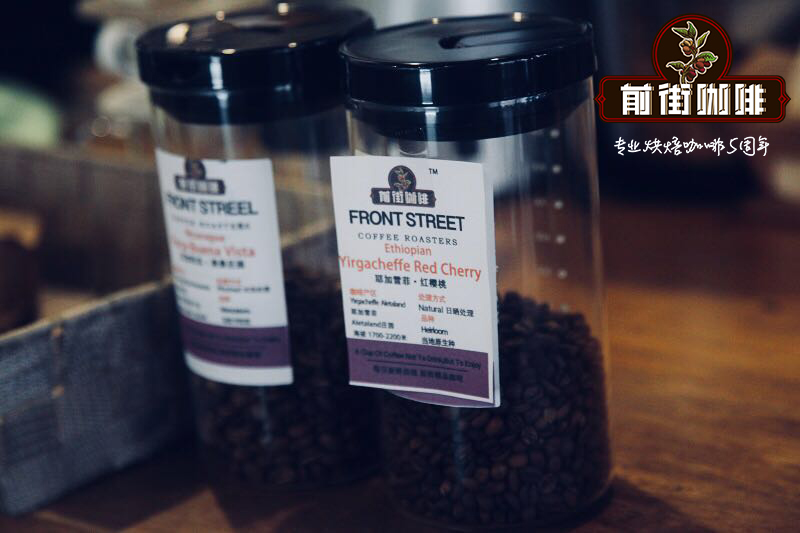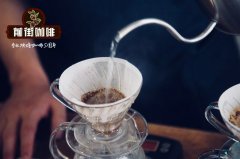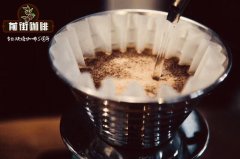What is the taste of Blue Mountain Coffee? the characteristics of Jamaican Blue Mountain Coffee and the different flavors of ordinary Coffee

Professional coffee knowledge exchange more coffee bean information please follow the coffee workshop (Wechat official account cafe_style)
Have you ever had Blue Mountain Coffee?
As you may know, Blue Mountain is located in the east of Jamaica. The highest mountain in the Western Caribbean, despite its unique climate and soil conditions, is not really Blue Mountain coffee. Only coffee beans growing above 1700 meters above sea level will be certified as "Jamaican Blue Mountain Coffee" by the Jamaican government, while those below this line can only be called "Jamaican Alpine Coffee" at most.
Jamaica Blue Mountains
Although the top blue mountain coffee beans produce about 2,000 tons a year, these "golden" beans are still quite rare on the market. Because in 1969, Jamaica was hit hard by a hurricane. At that time, Japan's UCC Uashima Coffee introduced eco-technology into coffee cultivation to help revive the Jamaican coffee industry. As a token of gratitude, the Jamaican government signed a contract with Japan in 1971, agreeing to ship 90% of its annual output to Japan. Most of the remaining 10% go into the pockets of the rich or royalty before entering the market.
Coffee schematic diagram
Just because the amount of Blue Mountain coffee in circulation is so rare, the Blue Mountain coffee that we can usually buy in convenience stores or coffee shops can only be regarded as Blue Mountain "flavor" coffee. Usually, in order to imitate the slightly bitter and sour taste of Blue Mountain Coffee, the industry will use different varieties of coffee beans to mix. Conscientious shopkeepers use Jamaican alpine coffee mixed with , Hawaiian Kona coffee or Colombian coffee, while more black-hearted ones mix Brazilian, Guadeloupe or other cheap coffee. But even so, sales of these coffees from other countries have been boosted by "imitating" Blue Mountain Coffee. As for pure Blue Mountain coffee, although only a few shops in China sell it, if you want to taste a cup, I am afraid it will cost a lot of money.
In fact, "Blue Mountain Coffee does not contain Blue Mountain Coffee beans" is something that many coffee fans know, just like "there is no truffle in truffle chocolate" and "there is no sun in sun cake". And "there is no money in your wallet" may be the main reason why you have never tasted Blue Mountain Coffee.
The Blue Mountain of Jamaica is the highest mountain in the Western Caribbean (2256 meters high). The highest annual output of top Blue Mountain coffee is 2400 tons, of which WALLENFORD, the state-owned estate, is the most important and famous coffee farm, while WALLENFORD, MAVIS BANK, SILVER HILL, MOY HALL and GOLD CUP are relatively well-known brands.
The production of coffee is the same as that of general agricultural products, and there are great changes due to the influence of the weather. In 1969, the production of Blue Mountain Coffee in Jamaica was troubled by the hurricane. UCC enterprises in Japan provided assistance to introduce ecological planting methods.
In gratitude for the assistance of Japanese companies, Jamaica signed a contract with Japan in 1972 to supply 90% of its annual output to the Japanese market. The remaining 10% of about 3500 barrels (70 kg in oak barrels) are then released to the market (and the only coffee that preserves oak barrel packaging), so Blue Mountain Coffee is very popular in the market, establishing Blue Mountain Coffee as the dominant coffee market.
In addition to less production, the cooking skills that show the flavor of Blue Mountain Coffee-slightly sour and less bitter-are also more difficult to master, so some chefs use this as a skill to show the moderation of Blue Mountain Coffee.
Baking
Blue Mountain Coffee Beverage.
Blue Mountain coffee should be roasted in the way of medium roasting (city roast), which can make the oil of coffee beans float to the surface and burn into an oily brown, which can not only preserve the original taste of coffee beans, but also moderately release aroma, so that the sour, sweet and bitter taste of coffee can reach the best balance, and the taste is clear.
Market
Blue Mountain Coffee is a famous coffee variety, and its output is very small, so it is expensive. Blue Mountain is located in the coffee belt between 25 degrees north latitude and 25 degrees south latitude. The amount of real Blue Mountain coffee is very small, producing only 40, 000 bags (about 2.4 million kilograms) per year. The cheaper "Comprehensive Blue Mountain" (Blue Mountain Blend) or "Blue Mountain" coffee (Blue Mountain Style) on the market is usually a combination of better quality Colombian beans, intended to mimic the taste of Blue Mountain.
Important Notice :
前街咖啡 FrontStreet Coffee has moved to new addredd:
FrontStreet Coffee Address: 315,Donghua East Road,GuangZhou
Tel:020 38364473
- Prev

Hawaiian Kona washed coffee beans, will the hands be sour? how to flush out the tropical fruit?
Professional coffee knowledge exchange more coffee bean information Please follow Coffee Workshop (Wechat official account cafe_style) the world-famous Hawaiian Kona is a mellow and sour coffee bean, the unique growth and climatic environment make Hawaii Kona perfect taste: the taste of Hawaiian beach, monsoon and volcano. The Kona coffee beans from Hawaii are the most beautiful coffee in the world.
- Next

Blue Mountain Coffee planting altitude Jamaica Blue Mountain Coffee which estate is more famous and authentic
Professional coffee knowledge exchange more coffee bean information please follow the coffee workshop (Wechat official account cafe_style) the Blue Mountains are located in the eastern part of the island of Jamaica. The reason why this mountain has such a beautiful name is that a British soldier came to the island of Jamaica and saw that the peak was shrouded in blue light and shouted: look! The blue mountain! From then on, it was named "Blue Mountain". Actual situation
Related
- Detailed explanation of Jadeite planting Land in Panamanian Jadeite Manor introduction to the grading system of Jadeite competitive bidding, Red bid, Green bid and Rose Summer
- Story of Coffee planting in Brenka region of Costa Rica Stonehenge Manor anaerobic heavy honey treatment of flavor mouth
- What's on the barrel of Blue Mountain Coffee beans?
- Can American coffee also pull flowers? How to use hot American style to pull out a good-looking pattern?
- Can you make a cold extract with coffee beans? What is the right proportion for cold-extracted coffee formula?
- Indonesian PWN Gold Mandrine Coffee Origin Features Flavor How to Chong? Mandolin coffee is American.
- A brief introduction to the flavor characteristics of Brazilian yellow bourbon coffee beans
- What is the effect of different water quality on the flavor of cold-extracted coffee? What kind of water is best for brewing coffee?
- Why do you think of Rose Summer whenever you mention Panamanian coffee?
- Introduction to the characteristics of authentic blue mountain coffee bean producing areas? What is the CIB Coffee Authority in Jamaica?

